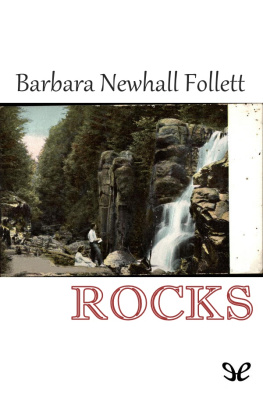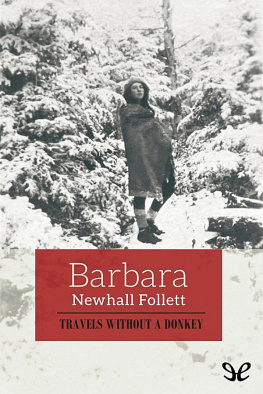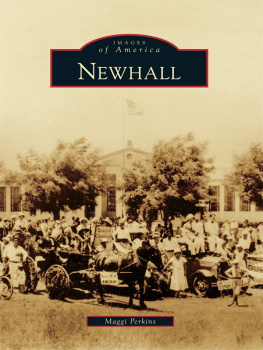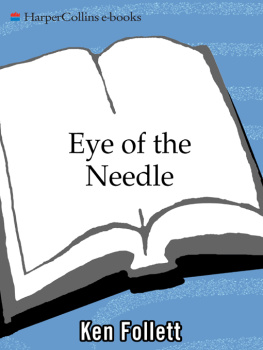Barbara Newhall Follett - Rocks
Here you can read online Barbara Newhall Follett - Rocks full text of the book (entire story) in english for free. Download pdf and epub, get meaning, cover and reviews about this ebook. year: 1931, publisher: ePubLibre, genre: Art. Description of the work, (preface) as well as reviews are available. Best literature library LitArk.com created for fans of good reading and offers a wide selection of genres:
Romance novel
Science fiction
Adventure
Detective
Science
History
Home and family
Prose
Art
Politics
Computer
Non-fiction
Religion
Business
Children
Humor
Choose a favorite category and find really read worthwhile books. Enjoy immersion in the world of imagination, feel the emotions of the characters or learn something new for yourself, make an fascinating discovery.
- Book:Rocks
- Author:
- Publisher:ePubLibre
- Genre:
- Year:1931
- Rating:5 / 5
- Favourites:Add to favourites
- Your mark:
- 100
- 1
- 2
- 3
- 4
- 5
Rocks: summary, description and annotation
We offer to read an annotation, description, summary or preface (depends on what the author of the book "Rocks" wrote himself). If you haven't found the necessary information about the book — write in the comments, we will try to find it.
Rocks — read online for free the complete book (whole text) full work
Below is the text of the book, divided by pages. System saving the place of the last page read, allows you to conveniently read the book "Rocks" online for free, without having to search again every time where you left off. Put a bookmark, and you can go to the page where you finished reading at any time.
Font size:
Interval:
Bookmark:
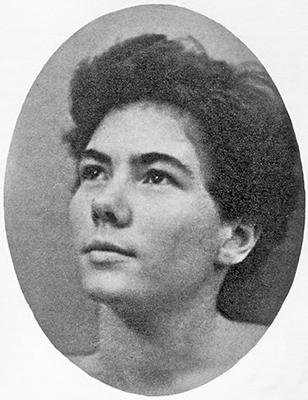
BARBARA NEWHALL FOLLETT (March 4, 1914 in Hanover, New Hampshire). Her father was Wilson Follett, an English teacher at Dartmouth College at the time, who became a well-known editor and writer of the book, Folletts Modern American Usage, still published today. Her mother was Helen Thomas Follett, a writer in her own right who later in life published two travel books..
A turning point for Barbara was her fascination with her fathers typewriter. Tell me a story about it, she demanded, and after her father explained how it worked, she began furiously producing her thoughts onto paper.
When she was four years old, she met an elderly Swedish gentleman who restored antiques, Mr. Oberg. Her stuffed toy rabbit had lost an eye, and Mr. Oberg paused in his work on two ancient clocks to repair her rabbit. Barbara was so impressed that not long afterward she composed her first important correspondence, a story in Mr. Obergs honor, and signed it with her full name:
Twelve clocks were on a shelf all ticking away. They wanted to take a walk, so they Jumped down and started. A little dog saw them and pushed one over, then another, and finally all. They were broken into pieces. Then Mr. Oberg came along and said: Oh my! and put the pieces into a basket and took them home. He mended them; and now they are as good as new.
Barbara Newhall Follett
Believing Barbara would receive a better education at home rather than public or private school, the Folletts decided to design their own homeschool curriculum for Barbara, primarily created by Helen Follett.
When she was five years old, she was writing quite long stories, including a tale called The Life of the Spinning Wheel, the Rocking-Horse, and the Rabbit, which was unusually imaginative with a full-bodied vocabulary. The story is reproduced in the book, Barbara, the Unconscious Biography of a Child Genius, a much later book published in 1966 based on Barbaras letters and stories.
In 1922, at age seven, Barbara, who played the violin, was composing striking poetry based on her music:
When I go to orchestra rehearsals,
there are often several passages for the
Triangle and Tambourine
together
When they are together,
they sound like a big piece of metal
that has broken in thousandths
and is falling to the ground.
When she was eight years old, she began work on The House Without Windows as a gift for her mother. After the first manuscript was destroyed in a fire, it was recreated over a period of a few years, finally completed when she was eleven, and published in 1927 when she was twelve to great acclaim.
After publication of her novel, Barbara became fascinated with the sea and convinced her parents the next summer to allow her to accompany the crew of a ship, the Frederick H., a three-masted schooner bound for Nova Scotia. Though she was supposed to be a passenger, she insisted on doing chores as a deck-hand. After returning home, she turned her adventure into a novel, The Voyage of the Norman D., which was accepted for publication in 1928 when she was thirteen years old. Barbara was famous.
During this time, her father was spending more and more time in New York, and shortly after her latest novel was published, she received the news that her father was leaving the family for another woman. This devastated Barbara, who was very close to her father.
During the next few years, she and her mother travelled to several countries with Helen hoping to publish a travelogue of their adventures. This was not immediately successful, and they were forced to return to the United States. Barbara for some time was left with friends in Los Angeles, a place she loathed, particularly when she began attending school. She ran away to San Francisco, but was reported as a runaway, and was picked up by authorities. The case made national headlines.
All of this was especially tragic timing, as 1929 brought the beginning of the Great Depression and after returning and being reunited in New York, Helen Follett and Barbara found themselves very tight for money. Barbara was forced at age sixteen to get a job in New York as a typist after taking a course in shorthand and business typing, a decidedly more tawdry use of its magic, as she described it.
In June, she wrote to a friend: My dreams are going through their death flurries, I thought they were all safely buried, but sometimes they stir in their grave, making my heartstrings twinge. I mean no particular dream, you understand, but the whole radiant flock of them togetherwith their rainbow wings, iridescent, bright, soaring, glorious, sublime. They are dying before the steel javelins and arrows of a world of Time and Money.
By 1934, she had written two more books, Lost Island, a novel, and Travels Without a Donkey, a travelogue. But they were never published.
Around this time, she met a man named Nickerson Rogers, an outdoorsman who shared her love of nature. They soon eloped and had adventures backpacking through Europe. They settled down in Brookline, Massachusetts where they were relatively secure and happy, at least for some time. Barbara took dance classes during the summers at Mills College, which she loved.
In 1939, she believed Rogers was seeing another woman. She wrote to a friend: There is someone else I had it coming to me, I know.
Later in the same letter, she wrote: I think Ive persuaded him to give me my chance. He is a very kind person, really, and hates to hurt people. He hated to write that letter; thats why it sounded so awful. I think that, if I can really prove that Im different, why maybe things will work out. He still doesnt quite believe it, as he says, that a leopard can change its spots! He thinks that in a month things will be all wrong again. So I say, at least let me have that month! I think Ill get it, and I think I can win if Ive got the strength.
A later letter showed that Barbara was hopeful things could be salvaged: I had had the feeling up till then that he definitely did not want to [make a go of things]. So imagine my amazement, my almost hysterical delight, when he said yes, he wanted to make a go of it.
But the good feelings were not to last: I dont know what to say now. On the surface, things are terribly, terribly calm, and wrong just as wrong as they can be. I am trying we both are trying. I still think there is a chance that the outcome will be a happy one; but I would have to think that anyway in order to live; so you can draw any conclusions you like from that!.
That was Barbaras last letter to her friend, or to anyone else as far as is known. On Thursday, December 7, 1939, Barbara and Nick quarreled, and she left their Brookline apartment that evening with $30 and a notebook.
She was never heard from again.
Nick, after she didnt return, reported her missing two weeks later. The bureau of Missing Persons sent out a five-state alarm, but to no avail. Some believed she had run away, perhaps to her friend in California, but no evidence or communication from her has ever surfaced.
Barbara Newhall Follett, brilliant and once famous, simply disappeared.
Ttulo original: Rocks
Barbara Newhall Follett, 1931
Editor digital: Titivillus
ePub base r2.1
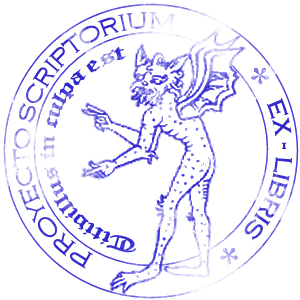
In the summer of 1931, Barbara, Nick Rogers, and two friends spent some time camping and exploring the Katahdin area of Maine. Later, Barbara wrote about her relationship with the great mountain in an unpublished story entitled
Font size:
Interval:
Bookmark:
Similar books «Rocks»
Look at similar books to Rocks. We have selected literature similar in name and meaning in the hope of providing readers with more options to find new, interesting, not yet read works.
Discussion, reviews of the book Rocks and just readers' own opinions. Leave your comments, write what you think about the work, its meaning or the main characters. Specify what exactly you liked and what you didn't like, and why you think so.

